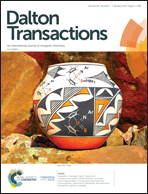Phosphomolybdic acid as an efficient hole injection material in perovskite optoelectronic devices†
Abstract
Efficient perovskite devices consist of a perovskite film sandwiched between charge selective layers, in order to avoid non-radiative recombination. A common metal oxide used as a p-type or hole transport layer is molybdenum oxide. MoO3 is of particular interest for its very large work function, which allows it to be used both as an interfacial charge transfer material and a dopant for organic semiconductors. However, high quality and high work function MoO3 is typically thermally evaporated in a vacuum. An alternative solution-processable high work function material is phosphomolybdic acid (PMA), which is stable, commercially available and environmentally friendly. In this Communication, we show the first application of PMA in efficient vacuum processed perovskite devices. We found that the direct growth of perovskite films onto PMA leads to strong charge carrier recombination, hindering the solar cell photovoltage. Using an energetically suitable selective transport layer placed between PMA and the perovskite film, solar cells with efficiency >13% as well as LEDs with promising quantum efficiency can be obtained.



 Please wait while we load your content...
Please wait while we load your content...